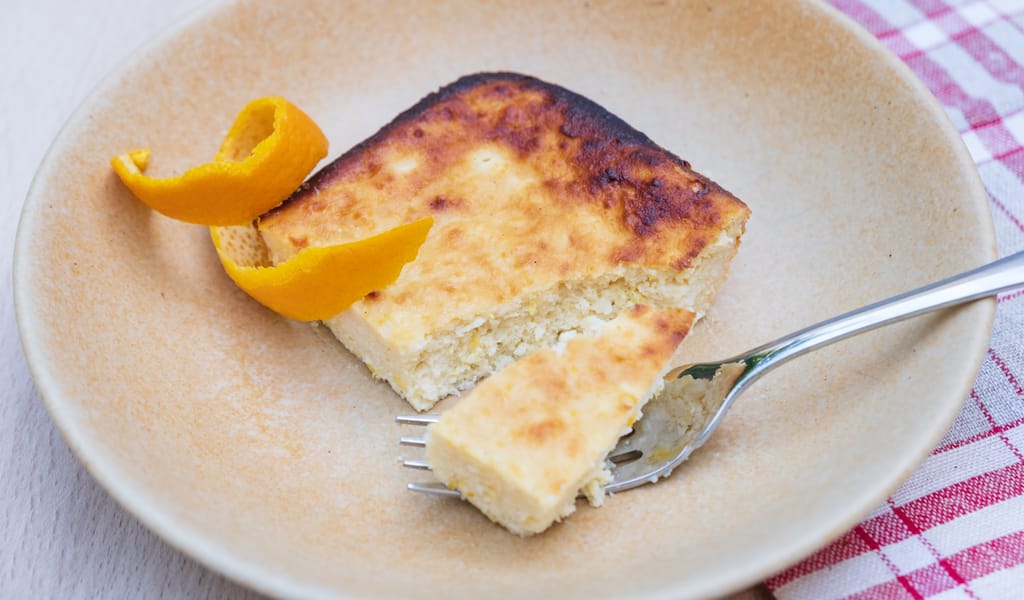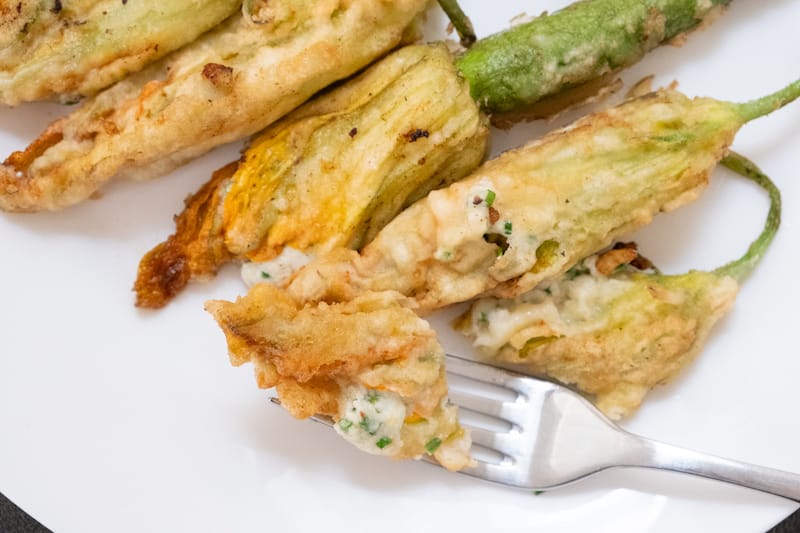As the summer crowds disappear and the autumn temperatures arrive, les Marseillais await the arrival of a well-known delicacy from the neighboring island of Corsica. Beginning around November, the island’s best-known cheese, Brocciu, also known as national casgiu (the national cheese) shows up in markets and specialty shops. The mild, soft cheese hints at the richness of the island terroir, with aromas of hay and grass. It’s made from goat’s or sheep’s milk and whey, and produced only from November until June, when the milk is at its richest.
Brocciu first appeared in writings from the 19th century, but Corsican farmers practiced the tradition of making the beloved cheese long before. Essential to Corsica’s culinary tradition and heritage, Brocciu is used in the preparation of many authentic dishes as well as eaten plain on a salad or as a dessert with honey or fig jam. The cheese may be eaten fresh made or it left to ripen from a couple of days up to one month, then called Brocciu passu.
Of the many dishes made with the cheese, a single standout is the Corsican dessert, le fiadone. Difficult to describe, perhaps a cross between an Italian flan and a New York cheesecake, it originated in the north of Corsica in the Corte region. The fiadone’s ancestral cousins are the Italian fiadoni (flans), first seen in cookbooks in the 16th century. More a cake than a flan and not at all dense like the NY cheesecake, the fiadone is airy, citrusy, milky sweet, and crustless. There is a more rustic version as well, so deliciously rustic in fact that it is known as la imprudcciata (the imprudent) in the region of Ajaccio. Historically, the cake was reserved for special occasions, baptisms, weddings, holidays and was always served at Easter. Today it can be eaten on any occasion and is found on menus throughout Corsica and here in the south mainland of France.
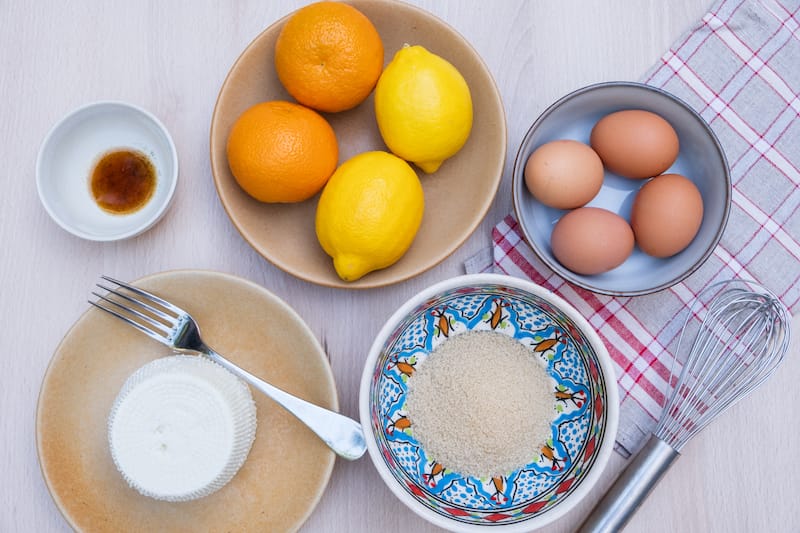
Because of its proximity to the island, Marseille is now home to a population of around 100,000 Corsicans, and the influence of the island’s culture is ever-present in the city. Many Corsicans settled in the Panier neighborhood, where the Corsican language can still be heard in some local businesses. One authentic family-run Corsican restaurant in the Panier that offers fiadone on occasion is La Strega. Originally from the northeastern city of Bastia, matriarch and owner Bernadette says that the recipe is a long-held family secret. Other Corsican spots in Marseille for the desert are Le Cercle Rouge and U Mio Paese.
If you are not near Marseille or Corsica, luckily, the fiadone is very easy to make using only four or five ingredients that most of us have on hand in our kitchens every day. That being said, since the main ingredient is the difficult-to-find Brocciu cheese, there are simple substitutions. While it won’t taste precisely the same, it is still a fantastic, easy-to-make dessert that will impress any dinner party or Sunday brunch.
If Brocciu is not available, you can simply substitute it with a good quality soft ricotta. You can also use either a sheep’s milk or goat’s milk Brousse, (a soft, sweet, rindless cheese from the South of France and Corsica) if available in your area. It must be said, Brousse is not the same as Brocciu although the two are sometimes confused. According to the Corsican Agricultural and Rural Development Agency, Brocciu must contain at least 40 percent fat; any less, it’s Brousse.
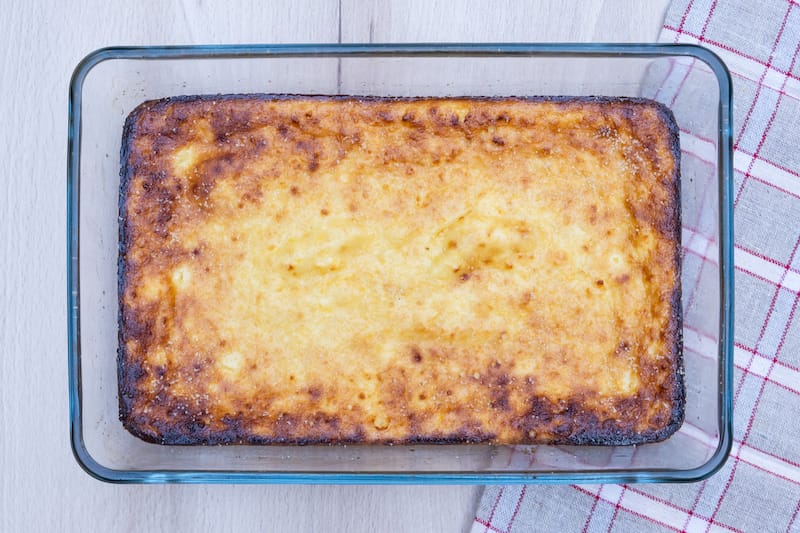
For additional flavor, if so desired, you can add a spoon of either brandy, eau-de-vie, or liqueur de myrte, an alcoholic digestif that is popular in Corsica and Sardinia, made from macerated Myrtle berries or a mixture of the berries and leaves.
If you do not like the taste of alcohol in your baked goods, substitute a bit of vanilla extract or orange blossom water. Now, with just a few eggs, sugar, cheese, and some lemons, you are all set. A piece of cake!
Recipe: Le Fiadone, Corsican Cheesecake
Serves 6-8
Ingredients:
4-5 whole eggs
6-7 tablespoons (125-150g) white or raw sugar – 1 tablespoon reserved
17.5 ounces (500g) brocciu cheese (substitute ricotta or brousse, strained with cheesecloth)
2 large lemons – finely grated zest and 2 tablespoons of juice (can also use orange juice)
1 tablespoon (15g butter) for the pan
Optional flavor ingredients:
1 teaspoon vanilla extract or orange blossom water
OR
1 tablespoon brandy, eau-de-vie, or liqueur de myrte
Instructions:
Preheat oven to 350° F (180˚C °)
Beat eggs and sugar for 5 minutes.
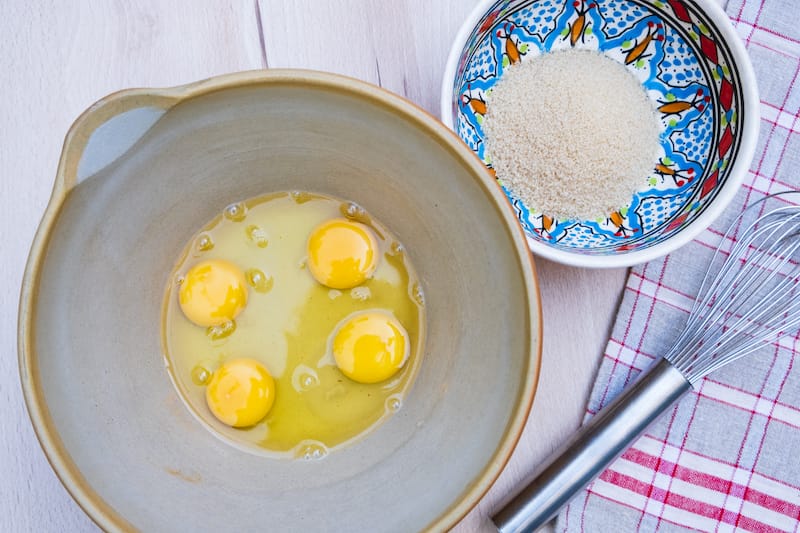
Mash the brocciu (ricotta or brousse) with a fork and add the lemon zest and juice. Add vanilla extract, orange blossom water, brandy, eau-de-vie, or liqueur de myrte if desired for flavor.
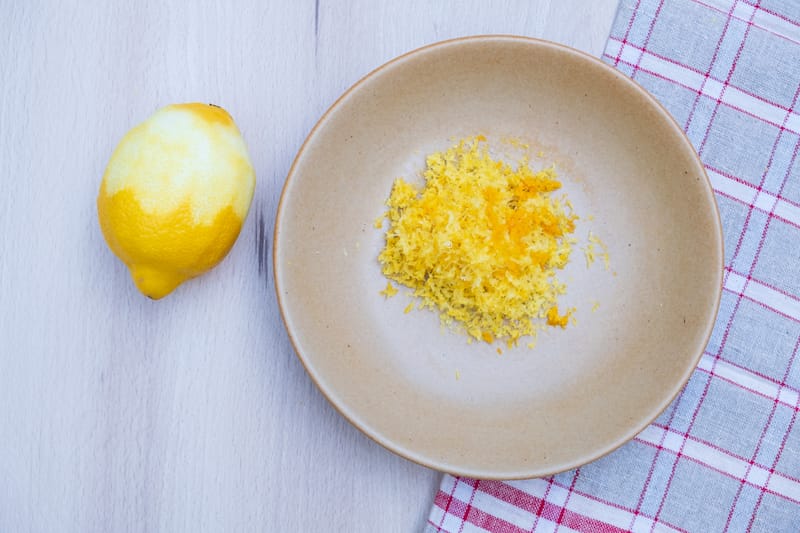
Combine the egg mixture with the cheese, and whisk again for 10-15 seconds. The mixture should not be perfectly smooth, and a few small lumps may still be present.
Grease a 9-inch (25-cm) cake pan or glass cake dish (can be rectangular or round, whichever you prefer) with the butter, and line the bottom with parchment paper. For caramelized edges, use a metallic cake tin, otherwise use a porcelain or glass cake dish. Pour in the mixture and bake for 40-50 minutes; a little longer if your prefer the top to brown. The fiadone is done when the top begins to turn golden brown, and a knife inserted in the center comes out clean.
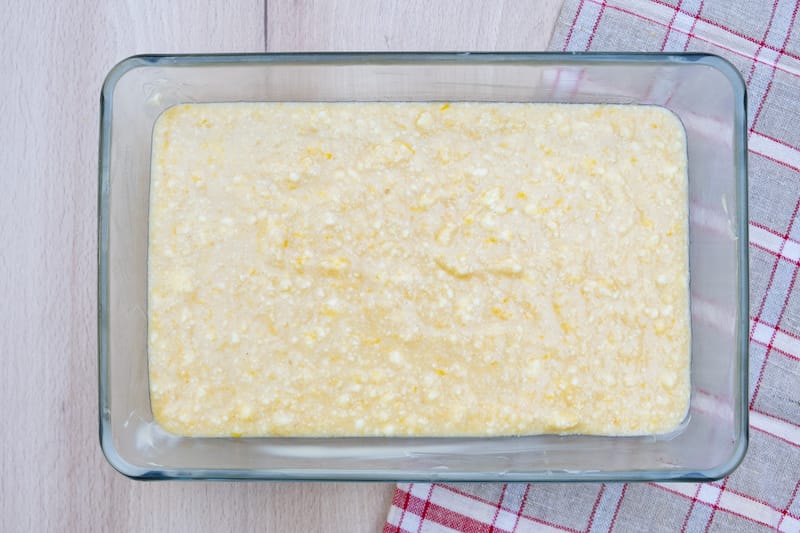
Immediately after removing from the oven, sprinkle the reserved tablespoon of sugar over the top of the fiadone. Once the fiadone has cooled, place it in the fridge for at least 8 hours before removing from cake pan. Serve chilled.
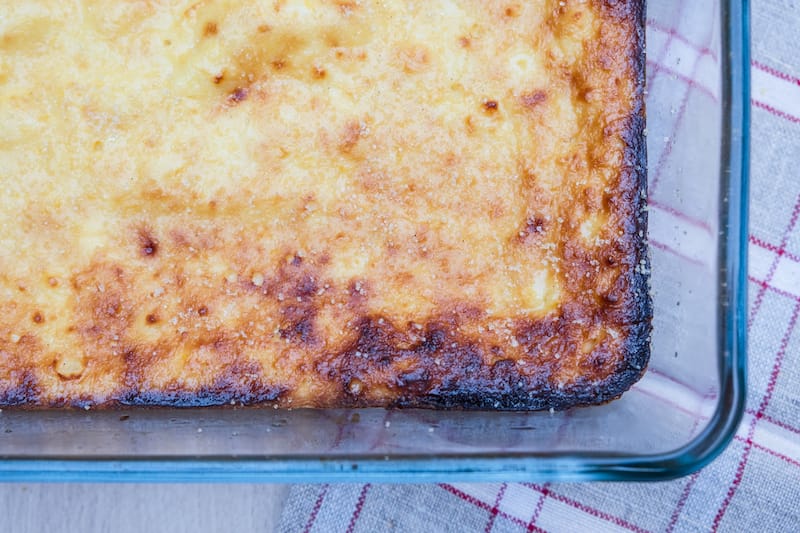
 July 17, 2024 Recipe
July 17, 2024 Recipe
Back in the day, according to legend, a man named Köpoğlu spent all his money on rakı, […] Posted in Istanbul July 4, 2024 Recipe
July 4, 2024 Recipe
Summer markets in Marseille come alive, bathed in a colorful, brilliant bounty when […] Posted in Marseille June 25, 2024 Recipe
June 25, 2024 Recipe
We’re in Os Papagaios, the restaurant Joaquim Saragga oversees in Lisbon’s Arroios […] Posted in Lisbon
Published on November 01, 2023
Related stories
July 17, 2024
Istanbul | By Lian Penso Benbasat
IstanbulBack in the day, according to legend, a man named Köpoğlu spent all his money on rakı, the Turkish spirit made from grapes and anise, and was left with no money to buy food. Hungry, pockets empty, he went home and grabbed a couple of eggplants, some tomatoes and garlic from his garden and threw…
July 4, 2024
MarseilleSummer markets in Marseille come alive, bathed in a colorful, brilliant bounty when fruits and vegetables are in their prime. There are over 25 open markets in Marseille and, every Saturday, our mornings are booked. We set out to one of our neighborhood favorites, the market at Place Sébastopol in the town center, to search…
June 25, 2024
LisbonWe’re in Os Papagaios, the restaurant Joaquim Saragga oversees in Lisbon’s Arroios neighborhood, where we’ve asked him to show us how to make one of Lisbon’s more iconic dishes: ervilhas guisadas, peas braised with Portuguese sausages, typically crowned with poached eggs. Come spring, Portugal revels in green-hued produce: fava beans, asparagus, artichoke, spinach and other…







































